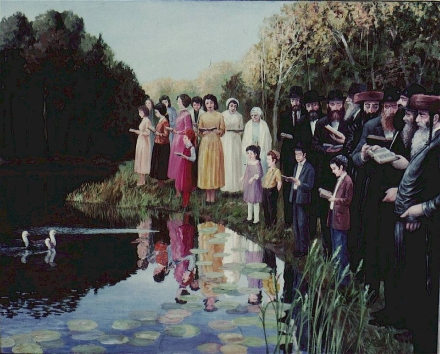The celebration of Rosh Hashanah is both festive and somber. While people get to rest and spend time with their families, they also must pray to be purified for the coming year These prayers become a very serious activity, especially for more religious Jews. For the most religious, many hours must be spent in temple praying for forgiveness for anything “unpure” done during the year that has just ended. During this time, bread and fish are thrown into water as a symbolic ritual. Immediately following this, a prayer called Tashlich, “you shall cast away”, is recited. The prayer and action symbolize the casting away of sin and the commitment to change for the New Year. Both the body of water and the fish are symbolic. Jewish writings compare the Bible to water, and just as fish cannot live without water, a Jew cannot live without Judaism.

After this is completed, a far more uplifting celebration called Suedah begins. The only thing required of one honoring Suedah is to eat, drink, and be merry with everyone.
A coworker, Yoni Franken, is an immigrant from Israel. Although I was unable to film an interview, he was able to talk briefly about his Rosh Hashanah experiences in Israel and New York. In Israel, Yoni had a temple his family had been going to for generations. They were very close to the Rabbi and the Rabbi’s family and went every year without fail. When Yoni came to New York, he did not want to go to another temple, as it wouldn’t be the same, so he instead simply does the prayers at home with his family and eats a large festive dinner.
 Probably the most interesting activity of Rosh Hashanah is blowing the Shofar. The Shofar is a ram’s horn, blown not only to symbolize what occured with Isaac (see video on first page), but to send the message that the New Year has arrived.
Probably the most interesting activity of Rosh Hashanah is blowing the Shofar. The Shofar is a ram’s horn, blown not only to symbolize what occured with Isaac (see video on first page), but to send the message that the New Year has arrived.
Interview with Ester Mordechaev about her Rosh Hashanah celebration, and why it is not as serious of a custom now that she lives in New York.
Continue on to the way the New Year is celebrated in America.

